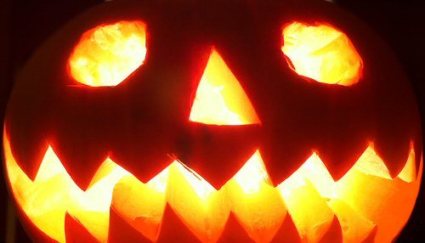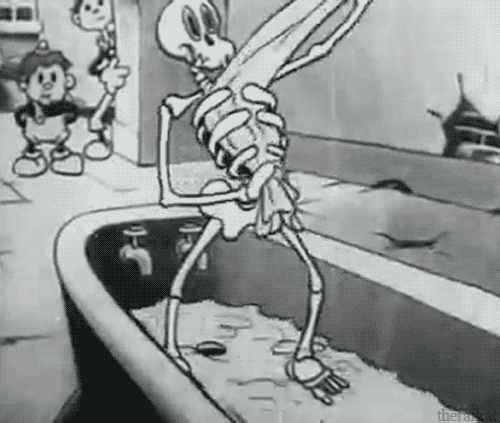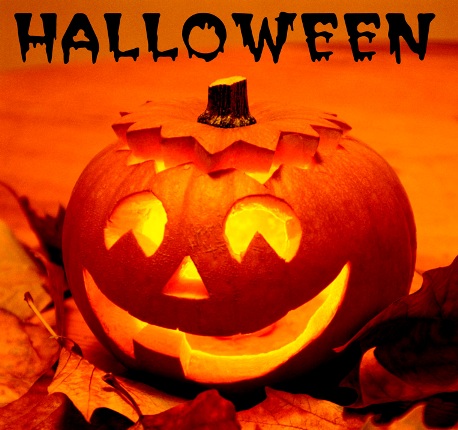

An Oddities in the News Special for October:
How Did Halloween Become Halloween?


The History of Halloween
Halloween's origins date back to the ancient Celtic festival of Samhain (pronounced sow-in).
The Celts, who lived 2,000 years ago in the area that is now Ireland, the United Kingdom, and northern France, celebrated their new year on November 1. This day marked the end of summer and the harvest and the beginning of the dark, cold winter, a time of year that was often associated with human death. Celts believed that on the night before the new year, the boundary between the worlds of the living and the dead became blurred. On the night of October 31, they celebrated Samhain, when it was believed that the ghosts of the dead returned to earth. In addition to causing trouble and damaging crops, Celts thought that the presence of the otherworldly spirits made it easier for the Druids, or Celtic priests, to make predictions about the future. For a people entirely dependent on the volatile natural world, these prophecies were an important source of comfort and direction during the long, dark winter.
To commemorate the event, Druids built huge sacred bonfires, where the people gathered to burn crops and animals as sacrifices to the Celtic deities.
During the celebration, the Celts wore costumes, typically consisting of animal heads and skins, and attempted to tell each other's fortunes. When the celebration was over, they re-lit their hearth fires, which they had extinguished earlier that evening, from the sacred bonfire to help protect them during the coming winter.
By A.D. 43, Romans had conquered the majority of Celtic territory. In the course of the four hundred years that they ruled the Celtic lands, two festivals of Roman origin were combined with the traditional Celtic celebration of Samhain.
The first was Feralia, a day in late October when the Romans traditionally commemorated the passing of the dead. The second was a day to honor Pomona, the Roman goddess of fruit and trees. The symbol of Pomona is the apple and the incorporation of this celebration into Samhain probably explains the tradition of "bobbing" for apples that is practiced today on Halloween.
By the 800s, the influence of Christianity had spread into Celtic lands. In the seventh century, Pope Boniface IV designated November 1 All Saints' Day, a time to honor saints and martyrs. It is widely believed today that the pope was attempting to replace the Celtic festival of the dead with a related, but church-sanctioned holiday. The celebration was also called All-hallows or All-hallowmas (from Middle English Alholowmesse meaning All Saints' Day) and the night before it, the night of Samhain, began to be called All-hallows Eve and, eventually, Halloween. Even later, in A.D. 1000, the church would make November 2 All Souls' Day, a day to honor the dead. It was celebrated similarly to Samhain, with big bonfires, parades, and dressing up in costumes as saints, angels, and devils. Together, the three celebrations, the eve of All Saints', All Saints', and All Souls', were called Hallowmas.

A humorous look at the worst Halloween costumes HERE
The worst baby costumes HERE
The worst retro costumes HERE
Not to be outdone, here are the 38 most inappropriate costumes overall HERE
ODD HALLOWEEN NEWS:
Dead man mistaken for Halloween display
LOS ANGELES — Residents of a Southern California apartment complex say they saw a lifeless body slumped on a neighbor's patio, but didn't call police because they thought it was part of a Halloween display.
Mostafa Mahmoud Zayed had apparently been dead since Monday.
Cameraman Austin Raishbrook, owner of RMG News, told the Los Angeles Times he was at the scene in Marina del Rey Thursday when authorities arrived. The 75-year-old Zayed was slumped over a chair on the third-floor balcony of his apartment with a single gunshot wound to the eye.
A Los Angeles County Sheriff's Department investigator says the case is an "apparent suicide."
Raishbrook says neighbors told him they noticed the body Monday "but didn't bother calling authorities because it looked like a Halloween dummy.
Reference to the above can be found HERE
How Anoka, Minnesota Became the Halloween Capital of World
by Sharron Stockhausen
Halloween came to America in the 1840s with Scottish and lrish immigrants. Although clergy frowned on its celebration, Americans found upbeat ways to celebrate the "dark" holiday and by the1870s fancy costume parties were found everywhere.
As the holiday headed west, Halloween celebrants put wagons on roofs, stole gates, let cattle loose, and turned over outhouses whether they were occupied or not.
In 1920, Anoka businessman and civic leader George Green suggested an organized celebration to keep the young folks busy.
The Anoka Commercial and Kiwanis clubs gave him their full support and in September a committee was formed. Soon teachers. parents and students joined in. Anoka became the self-declared Halloween Capital of the World.
For the next month 1,000 Anoka students dreamed of their costumes. An evening parade featuring local and neighboring bands and drum corps was planned. After the parade, hundreds of bags of popcorn, candy, and peanuts were passed out to the marching costumed children. Everyone gathered at Bridge Square for a large bonfire and program.
Every year the celebration grew more popular, but in 1942 and 1943 it was canceled because of World War II.